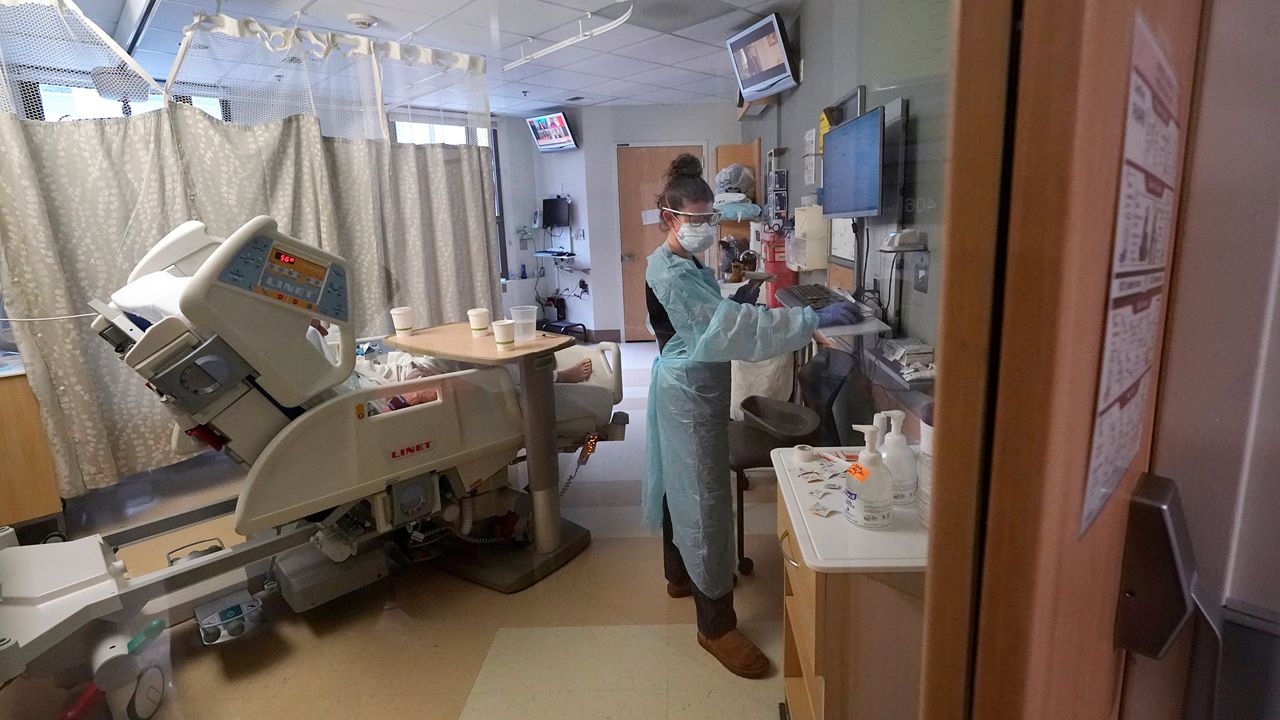COLUMBUS, Ohio — A hospital in Steubenville is opening a 20-bed “crisis unit" that will be staffed by travel nurses — one example of the state's new contract for temporary health care staff helping Ohio weather this period of the pandemic.
What You Need To Know
- Ohio's contract with the staffing firm ProLink is bringing travel nurses to hospitals
- Travel nurses said jobs in Ohio hospitals can be lucrative, but it's hard work
- The Cincinnati-based firm is also placing respiratory therapists in Ohio hospitals
Next week, 25 nurses start working at Trinity Medical Center West in a ward of the hospital that has been closed since the pandemic began, hospital officials said.
“They will be staffing this unit in an effort to help care for more patients, not only from our system, but also from regional hospitals who may need to transfer patients due to the availability of beds in the region,” Trinity Health System spokesperson Laurie Labishak said. “This should help decrease the number emergency room holds that are being seen in hospitals across the state.”
The Ohio Department of Health signed a contract with Cincinnati-based staffing firm ProLink to bring more temporary nurses and respiratory therapists to hospitals in the state. The agency has also been used for vaccinations and contract tracing in Ohio.
Sadie Diedrich, a nurse currently on a travel contract through ProLink at Kettering Health Miamisburg, said she is earning about $4,500 per week, working three 12-hour night shifts in intensive care units. The work is lucrative, but also challenging, because it’s not easy to care for COVID-19 patients at a time when hospitals are so busy, she said.
“I've been a nurse 10 years and, unfortunately, even though we're two years into this, our treatments haven't really changed, and they're still not very successful,” she said. “These are the sickest patients I've taken care of in a decade.”
Diedrich lives in the Cincinnati area and has been working through ProLink since Nov. 2020. Prior to starting with Kettering Health, Diedrich was working at UC Health, also in the ICU.
ProLink, which did not respond to a request for comment, was placing nurses at Ohio hospitals long before the state’s new contract with the firm took effect, and hospitals can still contract with the agency independently of the state agreement.
But the contract has brought more nurses to the bedside in Ohio at a time when their help is desperately needed, hospital officials said.
In northwest Ohio, ProMedica said ProLink agency employees started working with the health system two weeks ago to staff additional beds dedicated for COVID-19 patients.
“We appreciate that the state-level contract has provided us with access to nurses and respiratory therapists from outside of the state. We would not have been able to open additional surge beds without ProLink and Ohio National Guard assistance,” spokesperson Tausha Moore said.
Premier Health confirmed to Spectrum News that ProLink nurses and respiratory therapists arrived at Miami Valley Hospital this week.
“This additional support through Ohio’s ProLink initiative is greatly needed and appreciated,” spokesperson Benjamin Sutherly said.
Kelleigh Staley, who lives in Indiana, recently finished a travel nursing contract through ProLink at Kettering Health’s Soin Medical Center. She worked in the ICU, primarily caring for COVID-19 patients.
“The compensation is great, but with that higher compensation, you have to adapt a little bit quicker, you have to learn the lay of the land and the procedures, and you have to learn how the floor works,” she said. “And working with COVID patients, I mean, that deserves a million bucks an hour.”
Staley said she would work three 12-hour shifts per week, staying in a hotel between shifts, and then travel home to Indiana for her days off.
As a younger nurse two years into her career, she said she learns a lot from working in different hospitals on different floors, but she said working in the hospital with COVID-19 patients isn’t for everyone.
“It wears down on you very quickly and very easily. You have to be the nurse, and you have to be the therapist, and you have to be housekeeping, and you have to be family for the patient because they can't necessarily see their family," Staley said.
The Ohio Hospital Association reported Wednesday that COVID-19 patient numbers have declined for 10 consecutive days, giving officials optimism that the worst of the surge might be over. But the state is still reporting 5,887 hospitalized patients with COVID-19, which is more than the peak least winter.
In December, state officials became gravely concerned by the rising patient numbers and worsening staffing shortage at hospitals, which were seen first in northeast Ohio, OHA spokesperson John Palmer said.
The number of staff out due to quarantines and isolations was taking beds offline, prompting the state to activate the Ohio National Guard and sign the contract with ProLink, Palmer said.
“We're starting to see northeast Ohio cool off a little bit, but when you consider hotspots, we still have a lot of areas in the state that are still strained,” he said.



